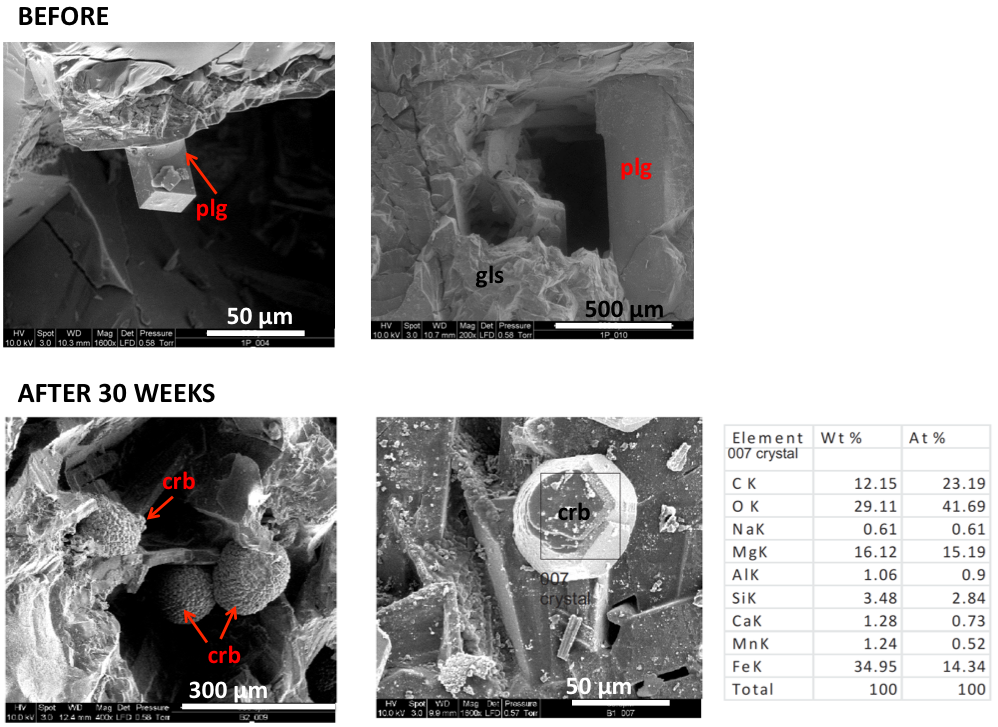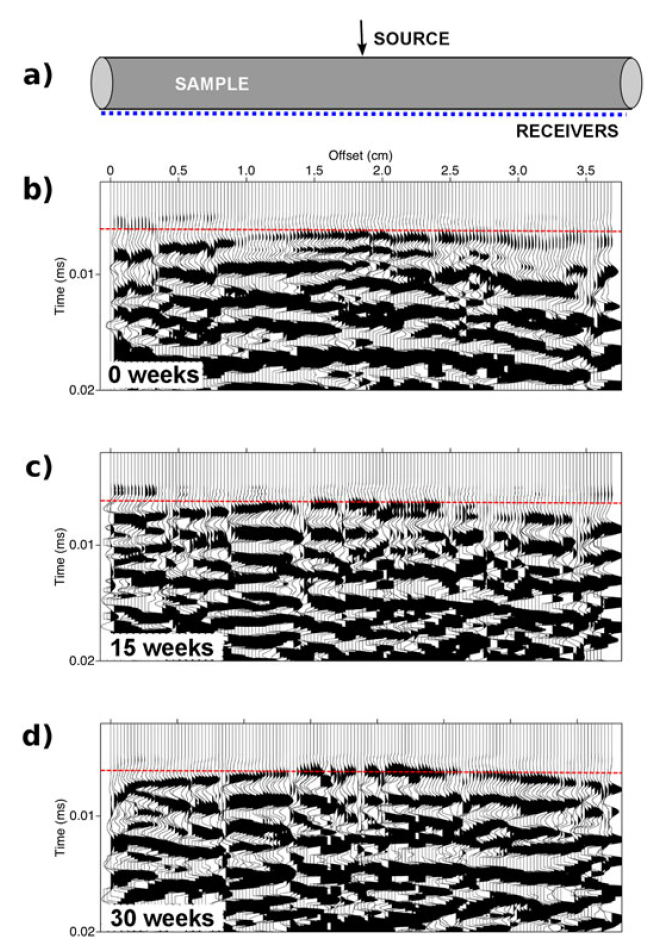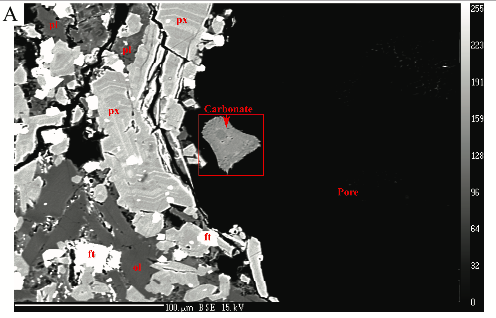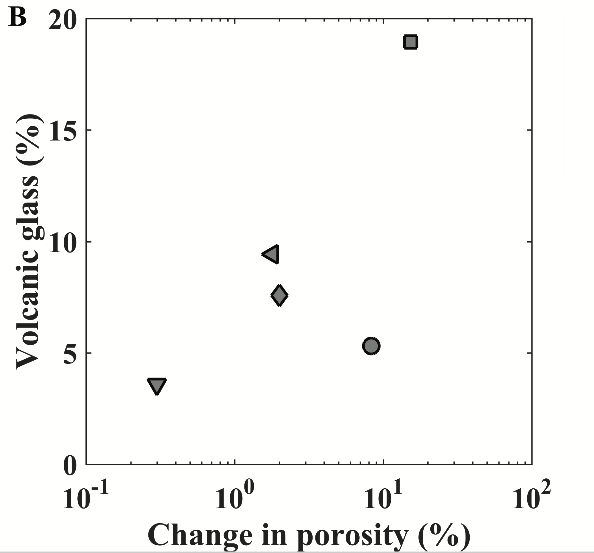Monitoring physical and elastic rock changes in rock-CO2-water reactions
Fluid-rock reactions (FRR) produce mineral dissolution and precipitation in subsurface settings, such as fluid conducting faults and volcanoes. Seismic waves can be used to monitor FRR, because FRR alters the elastic parameters of the rocks. However, rock core measurements are needed to quantify the correlation between field seismic data and the process of FFR. We are currently analyzing changes to the rock microstructure in sandstones and basaltic rocks and study ways to monitor such changes with elastic waves in laboratory measurements, borehole logs and seismic.

In Adam et al. (2013) we found that carbonates precipitated in microfractures of Snake River Plain Basalt samples, stiffening the rock and reducing the rock permeability.

In Kanakiya et al. (accepted to JGR 2017) we observed that carbonates (mostly ankerite) precipitate due to CO2-basalt reactions. However, rock dissolution affects the physical properties of the rock more significantly than carbonate precipitation. We obseved that there is a correlation between volcanic glass content and dissolution for Auckland Volcanic Field basalt samples.
Electron microprobe photographs of carbonates Correlation between rock dissolution (loss of mass) and glass

